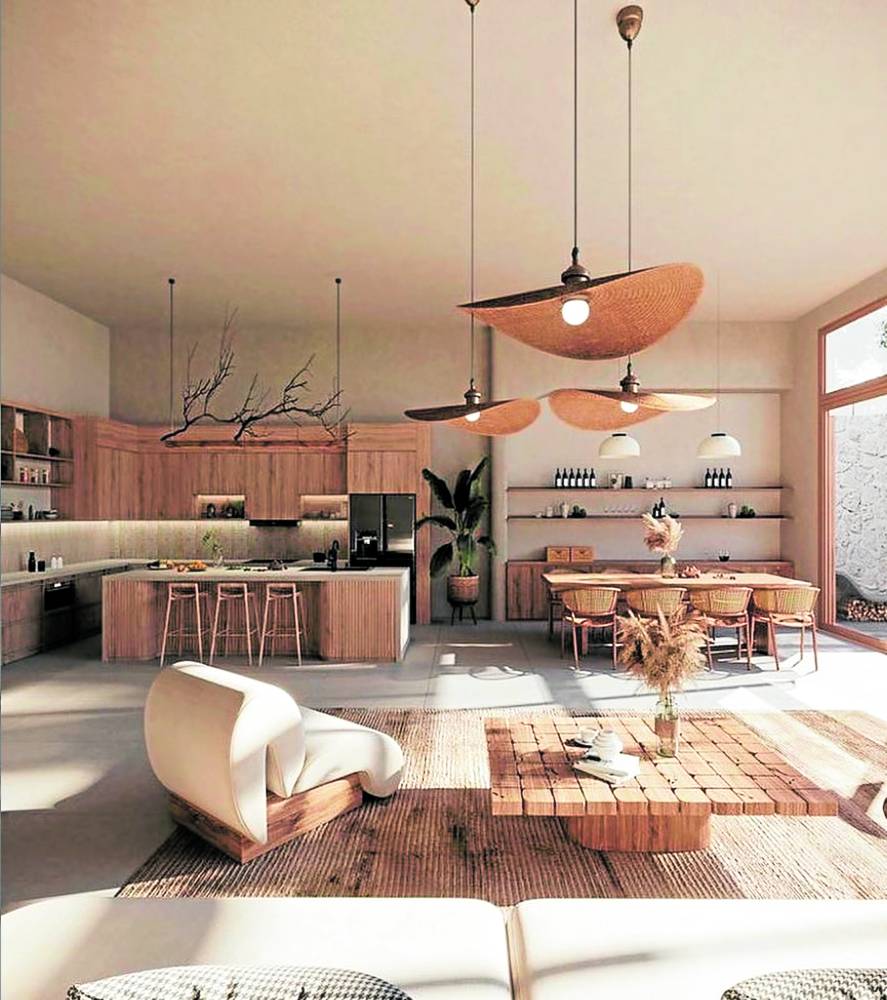
One of the ways to instantly liven up a space is to let daylight in. It’s healthy, it’s free and it helps save on the electric bill. It also boosts productivity, reduces anxiety, encourages a healthier sleep schedule, minimizes eye strain from too much exposure to artificial light, and even works as a disinfectant.
Lighting plays an important role in how people experience a place. But sometimes, “Houses become too much like a showroom,” says Aris Go, principal of architecture firm Ninety Design Studio. “The lighting may be beautiful, but there’s no daylight. It’s not livable.”
When it comes to design, Go says to “follow the light. We put emphasis on where people spend most of their time.”
But he admits that not every home can get a good amount of natural light, so he gives some tips on how to maximize the daylight that does enter any given space:
1. Prioritize. When considering the layout in a limited space, Go says to prioritize areas where the resident will be in most of the time. “Prioritize the living areas and where you actually go during the day.”
For him, the order should be: living room, kitchen, study or office, dining area, bedroom, then toilet.
“Since you’re using the bedroom to sleep, it would be low in priority for daylight,” he says. “Unless you rely on natural ventilation like here in Baguio, then you’ll definitely need windows.”
He suggested putting the bedroom on the north side where there is no direct daylight coming in.
But it still depends on the one using the space.
“Base it on activity: If you’re a night person, it’s better if it’s dim. If you’re a day person, you can consider putting the bedroom higher on the priority list.”
Toilets, however, can do without daylight. Unless the resident wants it in the toilet, then it’s okay to minimize natural light there.
2. Balance. More light is not necessarily better, Go says. “If windows are too big, the light might be too glaring and you won’t be able to work. But too dark is not good, either.”
According to him, there are certain levels needed when it comes to lighting. “Just as with anything, too much of a good thing (can be a bad thing). Everything has to have a proper balance. And the focus is not only on lighting but also natural ventilation.”
Natural lighting and natural ventilation often go hand in hand, as a source of one can also become a source for the other, although not always.
3. Reflect. A lot of condominium units have limited natural light sources, sometimes even relying on just one window for the entire studio. A workaround for minimal windows, Go says, is to use reflectors.
“A series of mirrors can be used to reflect more light from that small window,” he says. “Change the orientation of the reflectors to maximize the sun, and only when you need it.”
4. Orientation. There is no need to conform to anything—tradition or trend—when it comes to determining the orientation of a house. It can be adjusted according to the needs of the rooms, which depends on the needs of the people using them.
“I would put the living room on the second floor, because that would make it brighter than if it’s on the first floor,” says Go. And for a bungalow, he suggests putting a skylight in the toilet.
“Think of how you’ll live in the house. We can always reinvent what’s been done in the past. We don’t have to just follow the trend, but be a part of that,” he adds. “We don’t like to copy what’s been done in the past, but stand on their shoulders.”